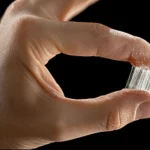How To Cure Gum Disease, Gum disease, also known as periodontal disease, is a common oral health condition that affects the gums and supporting tissues of the teeth. It is caused by bacteria in dental plaque, which can lead to inflammation, infection, and damage to the gums and surrounding structures.
If left untreated, gum disease can progress and result in tooth loss and other complications. In this comprehensive guide, we’ll explore what gum disease is, its causes and symptoms, different stages of gum disease, methods of prevention, and effective strategies for curing gum disease.
Knowledge About Gum Disease:
Gum disease is a progressive condition that starts with gingivitis, which is the early stage characterized by inflammation of the gums. If not addressed, gingivitis can advance to periodontitis, where the infection spreads to the deeper tissues and bone supporting the teeth. This can lead to gum recession, tooth mobility, and ultimately tooth loss. Common symptoms of gum disease include:
- Red, swollen, or tender gums
- Bleeding gums, especially during brushing or flossing
- Bad breath (halitosis)
- Receding gums or changes in gum appearance
- Loose or shifting teeth
- Pus between teeth and gums
- Pain or discomfort while chewing
Causes of Gum Disease:
The primary cause of gum disease is the buildup of plaque, a sticky film of bacteria that forms on the teeth and gumline. Plaque can harden into tartar (calculus) if not removed through regular brushing and flossing. Other factors that contribute to gum disease include:
- Poor oral hygiene habits
- Smoking or tobacco use
- Genetics and family history of gum disease
- Hormonal changes (such as during pregnancy or menopause)
- Diabetes and other systemic health conditions
- Medications that reduce saliva flow or affect gum health
- Poor nutrition and unhealthy diet
Stages of Gum Disease:
- Gingivitis:
- Inflammation of the gums is caused by plaque buildup and poor oral hygiene.
- Symptoms include redness, swelling, and bleeding gums.
- Reversible with improved oral hygiene habits and professional dental cleanings.
- Periodontitis:
- Advanced stage of gum disease where infection spreads to deeper tissues and bone.
- Symptoms include gum recession, tooth mobility, pus formation, and bone loss.
- Requires professional treatment to prevent further damage and tooth loss.

Methods of Prevention:
Preventing gum disease starts with good oral hygiene practices and regular dental check-ups. Here are some preventive measures:
- Brush your teeth twice a day with fluoride toothpaste and a soft-bristled toothbrush.
- Floss daily to remove plaque and food particles between teeth and along the gumline.
- Use an antiseptic mouthwash to reduce bacteria and plaque.
- Maintain a balanced diet rich in fruits, vegetables, lean proteins, and whole grains.
- Avoid smoking or tobacco use, which increases the risk of gum disease.
- Manage stress levels and practice relaxation techniques.
- Visit your dentist regularly for professional cleanings and oral health assessments.
Effective Strategies for Curing Gum Disease:
- Professional Dental Cleaning:
- Regular dental cleanings by a dental hygienist or dentist are essential for removing plaque and tartar buildup that contribute to gum disease.
- Professional cleanings also allow for thorough examination of gum health and early detection of gum disease.
- Scaling and Root Planing (Deep Cleaning):
- For more advanced gum disease, scaling and root planing may be recommended to remove plaque and tartar from below the gumline and smooth the root surfaces.
- This procedure helps eliminate bacteria and promote gum healing.
- Antibacterial Therapy:
- Antibacterial mouth rinses or gels containing chlorhexidine or other antimicrobial agents may be prescribed to reduce bacterial growth and inflammation in the gums.
- Laser Therapy:
- Laser technology is used in some dental offices to target and remove infected tissue, reduce bacteria, and promote gum regeneration.
- Laser therapy can be less invasive and result in faster healing compared to traditional methods.
- Periodontal Surgery:
- In severe cases of gum disease with significant gum recession or bone loss, periodontal surgery may be necessary to restore gum and bone structure.
- Surgical procedures like flap surgery, bone grafting, or tissue regeneration can help repair damaged tissues and improve gum health.
- Lifestyle Changes:
- Quit smoking or using tobacco products, as they can worsen gum disease and hinder healing.
- Maintain a healthy diet and lifestyle to support overall oral and systemic health.
- Manage underlying health conditions like diabetes that may contribute to gum disease.
- Home Care and Follow-Up:
- Follow your dentist’s instructions for home care, including proper brushing, flossing, and using prescribed medications or mouth rinses.
- Schedule regular follow-up appointments with your dentist or periodontist to monitor gum health and prevent the recurrence of gum disease.
Conclusion:
Curing gum disease requires a combination of professional dental care, effective oral hygiene practices, lifestyle modifications, and ongoing monitoring. Early detection and intervention are crucial for successful treatment and prevention of complications.
By understanding the causes and stages of gum disease, adopting preventive measures, seeking timely dental care, and following recommended treatment protocols, you can achieve healthy gums and maintain optimal oral health.
I’ve provided a comprehensive guide on how to cure gum disease, including its causes and symptoms, preventive measures, and effective strategies for treatment. If you have any specific instructions or further information you would like me to include or elaborate on in the article, please let me know. I’m here to assist you further and provide any additional guidance you may need.



